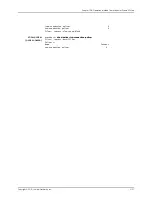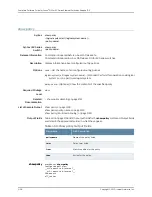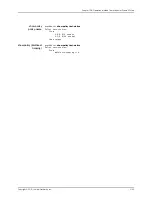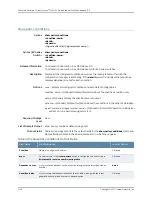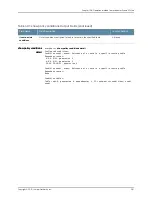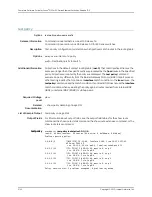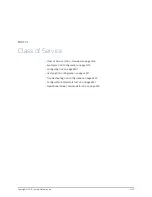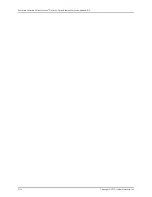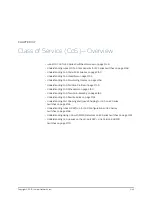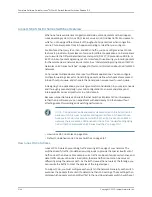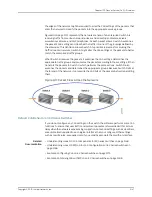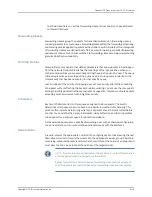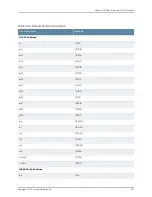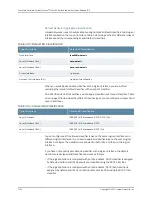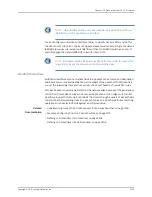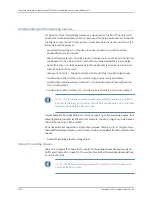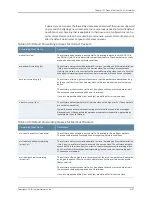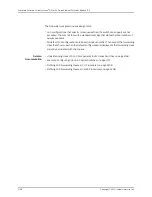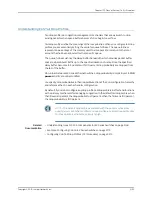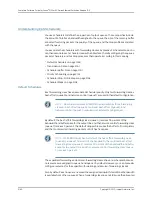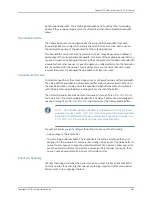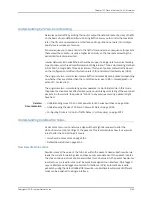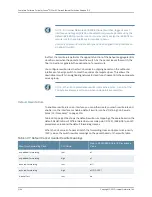
multifield classifiers, you set the forwarding class and loss priority of a packet based
on firewall filter rules.
Forwarding Classes
Forwarding classes group the packets for transmission. Based on forwarding classes,
you assign packets to output queues. Forwarding classes affect the forwarding, scheduling,
and marking policies applied to packets as they transit a switch. By default, four categories
of forwarding classes are defined: best effort, assured forwarding, expedited forwarding,
and network control. For EX Series switches, 16 forwarding classes are supported, providing
granular classification capability.
Tail Drop Profiles
Drop profile is a mechanism that defines parameters that allow packets to be dropped
from the network. Drop profiles define the meanings of the loss priorities. When you
configure drop profiles you are essentially setting the value for queue fullness. The queue
fullness represents a percentage of the queue used to store packets in relation to the
total amount that has been allocated for that specific queue.
Loss priorities set the priority of dropping a packet. Loss priority affects the scheduling
of a packet without affecting the packet’s relative ordering. You can use the loss priority
setting to identify packets that have experienced congestion. Typically you mark packets
exceeding some service level with a high loss priority.
Schedulers
Each switch interface has multiple queues assigned to store packets. The switch
determines which queue to service based on a particular method of scheduling. This
process often involves determining which type of packet should be transmitted before
another. You can define the priority, bandwidth, delay buffer size, and tail drop profiles
to be applied to a particular queue for packet transmission.
A scheduler map associates a specified forwarding class with a scheduler configuration.
You can associate up to four user-defined scheduler maps with the interfaces.
Rewrite Rules
A
rewrite rule
sets the appropriate CoS bits in the outgoing packet, thus allowing the next
downstream device to classify the packet into the appropriate service group. Rewriting,
or marking, outbound packets is useful when the switch is at the border of a network and
must alter the CoS values to meet the policies of the targeted peer.
NOTE:
Rewrite rules are applied when the packets are routed. Rewrite rules
are not applied when the packets are forwarded.
Egress firewall filters can also assign forwarding class and loss priority so
that the packets are rewritten based on forwarding class and loss priority.
3149
Copyright © 2010, Juniper Networks, Inc.
Chapter 107: Class of Service (CoS)—Overview
Summary of Contents for JUNOS OS 10.3 - SOFTWARE
Page 325: ...CHAPTER 17 Operational Mode Commands for System Setup 229 Copyright 2010 Juniper Networks Inc ...
Page 1323: ...CHAPTER 56 Operational Mode Commands for Interfaces 1227 Copyright 2010 Juniper Networks Inc ...
Page 2841: ...CHAPTER 86 Operational Commands for 802 1X 2745 Copyright 2010 Juniper Networks Inc ...
Page 3367: ...CHAPTER 113 Operational Mode Commands for CoS 3271 Copyright 2010 Juniper Networks Inc ...
Page 3435: ...CHAPTER 120 Operational Mode Commands for PoE 3339 Copyright 2010 Juniper Networks Inc ...
Page 3529: ...CHAPTER 126 Operational Mode Commands for MPLS 3433 Copyright 2010 Juniper Networks Inc ...



